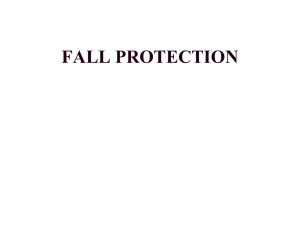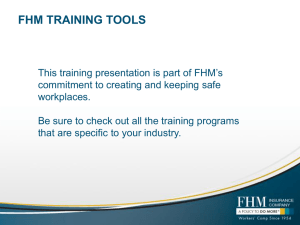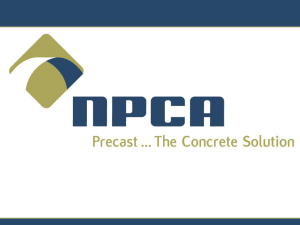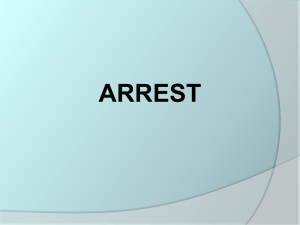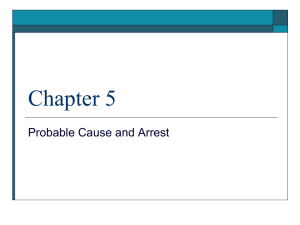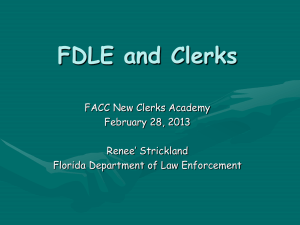power point is falls in construction
advertisement
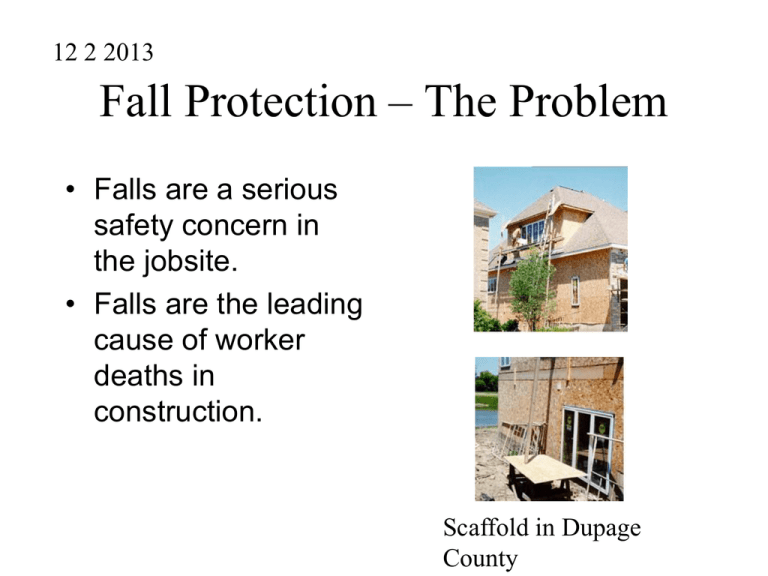
12 2 2013 Fall Protection – The Problem • Falls are a serious safety concern in the jobsite. • Falls are the leading cause of worker deaths in construction. Scaffold in Dupage County Dec 2013 • MD • A man working in the garage level of a row of town houses under slipped on a small patch of ice, fell and struck his head and died. September 2013 Jan 2013 • Three story • Roofer fell off edge • Saved by fall arrest Falls • New OSHA standards in 1995 • 1954 ANSI Standards • Fatal injuries involving falls increased by 20 from the preliminary count to 700 cases. Fall Sources Heights Falling? Region V fatality data 2007-2011 What is Fall Protection? • Fall protection protects workers from fall hazards. Fall protection doesn’t mean bulky or cumbersome equipment. It doesn’t interfere with work tasks and it doesn’t get in the way of coworkers – when used properly Unguarded open-sided floor Planning • Sometimes it takes a lot of work to do things wrong. • Elimination of fall hazards using the hierarchy of controls should be performed by all companies. Hierarchy of Fall Protection • Elimination – such as Cameras to monitor work. Elimination through design • Passive Fall Protection – Guardrails, Covers • Travel Fall Restraint • Administrative Control – such as climber training, warning systems • Fall Arrest Cameras used to monitor locations. Safety Program • 1926.20(b)(1) requires all construction companies to have an effective accident prevention program. • Identify where falls can occur to workers through Job Safety Analysis • Discuss the method of protection the worker must use. What Is Job Safety Analysis? • Method used to break a job task into separate and distinct steps • Four basic stages in conducting a JSA are: • selecting the job to be analyzed • breaking the job down into a sequence of steps • identifying potential hazards • determining preventive measures to overcome these hazards • http://www.ccohs.ca/oshanswers/hsprograms/jobhaz.html has usefull examples of JSA’s Training Train workers: - When to use fall arrest - How to wear fall arrest - Inspection of anchorages, lanyards, and harnesses Inspections • Conduct periodic inspections • Is fall arrest is worn? • Is fall protection is place? • Take pictures of people doing it right Inspection • All fall protection equipment and anchorages must be inspected at the beginning of each eight-hour shift by an authorized person • At least once per year (or more frequently if required by manufacturer) by a competent person or a competent rescuer as appropriate to verify equipment is safe for use. • Written or electronic records of inspection should be kept on file for service life of product. Enforcement • If people are not wearing the fall arrest, what is the consequence? Passive Fall Protection • • • • • Guardrails Strength = Top rail height = Mid-rail height = Wire rope/chain deflection of 2 inches Covers • Hold twice the weight • Secured • Marked Violation: 4' x 8' sheets of plywood covering a stairway opening to the basement of a house. Only four nails hold the two covers. The cover is not marked. Fall Arrest • Personal fall arrest system means a system used to arrest an employee in a fall from a working level. It consists of an anchorage, connectors, a body belt or body harness and may include a lanyard, deceleration device, lifeline, or suitable combinations of these. Free fall of 30 inches needs fall arrest not positioning Travel Restraint • 1000 lb anchorage • Cannot free fall to lower level • On flat surfaces. Work Positioning • • • Positioning device system means a body belt or body harness system rigged to allow an employee to be supported on an elevated vertical surface, such as a wall, and work with both hands free while leaning. Work Positioning free fall cannot exceed 24 inches Max fall arrest force is 900 lbs. • Lanyards and harnesses used • Equipment must have minimum breaking strength of • 5,000 lbs. Fall Arrest Components • Definition • Body Harness • Energy Absorbing Lanyard • Anchorage Fall Arrest • Fall Arrest Force Maximum Allowed • Harness = 1800 lbs. • Belt = 900lb (banned) Workers wearing a body harness in an aerial lift Fall Arrest • Harness are required for fall arrests • Belts are only for work positioning • Maximum Fall Arrest Force should be less 1800 lbs for a harness. One employee is not wearing fall arrest. Lanyards • Use energy absorbing lanyards or retractable lanyards. • Check for ANSI Z359.1 or OSHA 1926.502 marking • Calculate free fall distance Harness • • Labeled meeting ANZI Z359 or OSHA 1926.502 Use D-ring in back •Lanyard is not an energy absorbing lanyard. •This is a chest waist harness for work positioning. Not designed for fall arrest. Anchorages • A secure point of attachment for lifelines, lanyards or deceleration devices • 5000 lbs or 2:1 Safety factor is calculated by a qualified person. • Anchorages may weaken over time due to weather or environment Rescue • Must be planned • Following a fall, a worker may remain suspended in a harness. The sustained immobility may lead to a state of unconsciousness • http://www.osha.gov/dts/s hib/shib032404.html has more info on suspension trauma Fall Prevention Techniques • • • • • Handrails Slip resistant threads Slip resistant shoes Fall restraint systems Enclosed barriers • Eliminate exposure for routine checks by cameras or instrumentation • Build scaffold for long term exposure Scaffolds • • • • • OSHA 1926.451 Training specific for erectors and users. Inspections before use Fall protection required above 10 feet. Suspended scaffolds need independent fall arrest from the scaffold Scaffold Footing • Baseplates always required. • Mudsills needed if on earth. Scaffold Planking • Scaffolds must be fully planked, secured and overlapped. • Falling object protection required. • Inspect planks for damage or overloading. Scaffold Guardrails • Guardrails must be provided on all working platforms. Scaffold Access • Stairs are recommended • Scaffold access ladders must be secured Metal Bracket Scaffold • What questions would you ask the scaffold erector for this job.? Step Ladders • Used on stable surface • Not used as a ext. ladder • Inspected for defects • Never used on a scaffold Extension Ladder • 4:1 Pitch • 3’ extension above landing • No defects • Not near electrical • Secured from slipping Fixed Ladder • Stairs should be in place if used everyday. 1910.24 • Use fall arrest • Keep lanyard short to 12 inches if possible. • Inspect ladder for looseness and proper rails to roof Flat Roofs • Inspect for damaged or rotten roof deck and components. • Parapet must meets guardrail requirements • Lifting at edge requires guardrail protection • Warning lines and monitor required if not using conventional fall protection Skylights • Must cover them if working by them. • Will not hold a person’s weight Opensided Floors • Need two rails or cables • Fall height of 6 or more • Cable rails allowed 2 inch deflection. • Several falls into improperly guarded elevator shafts Floor Holes • Guardrails • Covers • Holes over 2”x2” are covered under the std. • Beware covers that are loose place over a hole. Forklift Platforms • Platform slides off • Improper rails • Pushes worker into fixes object • Pallet unacceptable • Scissors point on many carriages • Platform construction Sloped Roofs • Shinglers in residential must use fall arrest above 25’ or 8/12+ pitch • Slideguards is required otherwise above 6 feet Residential • One of the most cited standards in construction • 1926.503 requires specific training • Falls from roofs, sheathing, truss erection, openings to basement are among many of the falls. Sloped Roof • Sheathers can use a Controlled Access Zone, Monitor, and Slideguards in lieu of fall arrest. • Shinglers should use fall arrest and slideguards • OSHA 1926.501(b)(13) Extensible Boom Aerial Lifts • Wear fall arrest • Must have smooth surface to operate • Many flip in mud • Train operator in manual instructions Scissor Lifts • Workers must be trained in the operation manual • Full guardrails needed • Inspect area for holes that could flip the lift • Ensure proper lighting End chain is missing Stairs • Guardrails on side with both top and midrails • Handrails • Evenly spaced threads • Foot clearance • Required if climbing daily One handrail needed if both sides are enclosed Steel Erection • Ironworkers connecting out of an aerial lift. • Fall Protection required at 15/30 feet when decking or connecting. Safety Nets Used for Decking Decking is the most common activity that historically killed iron workers Nets used to protect deckers Suspended Platforms • Must follow 1926.550 (g) requirements • Often not wearing fall arrest • Platform must be proof tested Metal Grating • Must be secured with clips • Guardrails provided on both sides. Working Adjacent to Water • • • • Fall Protection Life vests Ring Buoys Skiff or boat Rebar Walls • Work positioning • Rebar wall must have spacing similar to a ladder to climb • Rebar Walls must be adequately braced Other Fall Surfaces • Tail gates • Riding equipment such as front end loaders and forklifts Rescue • The employer shall provide for prompt rescue of employees in the event of a fall or shall assure that employees are able to rescue themselves. • 1926.502(b)(20) Quick Quiz • Anchorages must be _____ lbs. • Fall arrest forces for harnessing shall not exceed _____ lbs. • What is the best in the hierarchy of fall protection? _____________ • Covers must hold _____ times the anticipated load. • Free fall over ____ inches is not allowed in work positioning.


